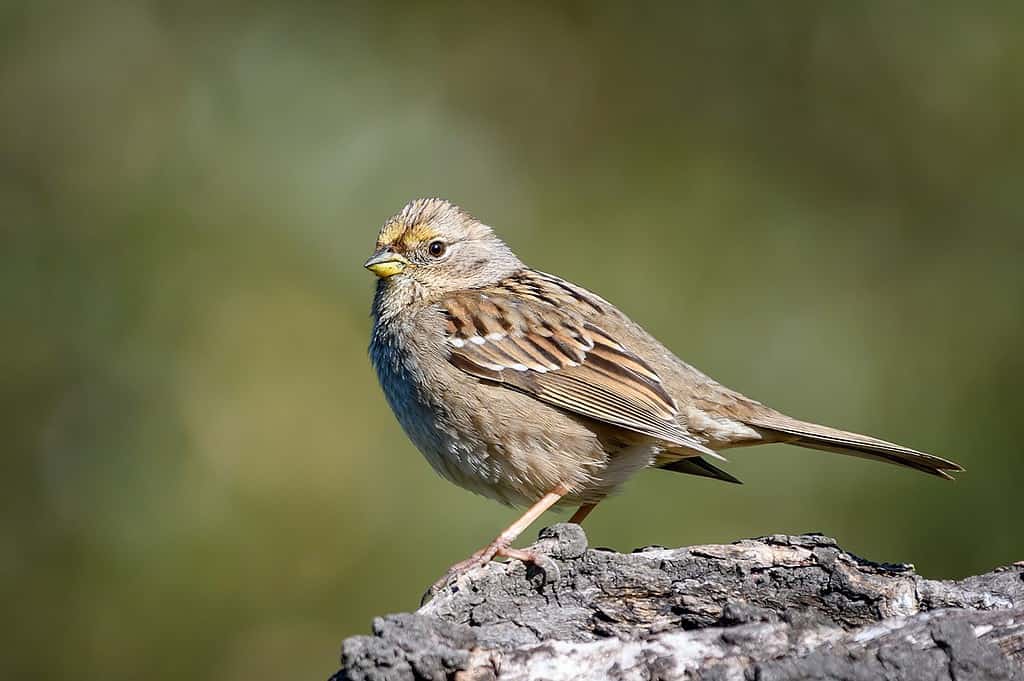
Each winter season, millions of birds embark on awe-inspiring journeys across the continents. This great migration is primarily driven by their primordial survival instinct, in response to the limited resources available in each region. As winter approaches, temperatures drop, and food becomes scarce, so many birds are forced to seek greener pastures.
But while resource availability takes center stage, birds take into account many other factors when deciding which winter nest to pick. Perhaps surprisingly, some birds care a lot about which other familiar birds show up at a particular winter spot.
For instance, researchers from the University of Nebraska–Lincoln showed in a new study that golden-crowned sparrows exhibit a remarkable degree of loyalty to their familiar flockmates and locations. It seems like for sparrows and people alike, home is where the heart is.
Chirping friendships
The migratory journey of golden-crowned sparrows (Zonotrichia atricapilla) can span up to 3,000 miles (4,800 km) as they travel to California for their winter grounds. Researchers discovered that sparrows who had returned to their preferred wintering spot tended to settle within an average of just 90 feet from their previous year’s location.
“The fact that they come back to this winter site and then hang out with the same individuals—and it’s important for them to be with the same individuals—is kind of a crazy thing that we’re still wrapping our heads around,” said lead author Annie Madsen in a media statement.
The sparrows were not just returning to a particular spot just because they liked the local flowers. The researchers followed a sparrow overwintering site located at the University of California, Santa Cruz for nearly ten years, meticulously tracking the movements and social networks of individual sparrows using leg bands and observations.
The researchers learned that golden-crowned sparrows that appeared at the site for at least their third consecutive winter began to drift from their original location if their closest flock buddies did not come back to the same area. This behavior highlights the significance of social bonds in influencing the sparrows’ choice of overwintering sites
But untangling the sparrows’ motivations was no trivial task, as the challenge presented a classic ‘chicken or egg’ dilemma. Do the sparrows stick to territory or their friends? These sparrows assemble in small groups before dispersing, only to reunite with different members of the flock later — they are known for these fission-fusion networks.
“Are they coming together because of a resource? Are they coming together because of social partnerships? And as they come together for resources, do they gain social partners? Or are they using social partners to find resources? It’s a complex question,” Madsen said, “that’s really hard to get at.
“But we wanted to know if there was some kind of directionality here, if there was one of those forces that took precedence. Do they care about this one specific patch of bushes, which is a really nice patch that they come back to every year? Or is it their friends, their flockmates, that they’re coming back to spend time with?”
Using the data at their disposal, Madsen and colleagues showed that the more consecutive winters a sparrow spent in Santa Cruz, the less its range shifted. At first glance, this pointed towards certain spots being ultra-appealing to the species.
The twist came when researchers noticed the impact of losing close friends, or the 10% of fellow sparrows most likely to be spotted together. A sparrow’s loyalty, they found, lies not just with a location but with the friendships it expects to find there. When those friendships wane, so does the bond with the specific location.
“It does seem like there’s something to having familiar flockmates that is important,” Madsen observes.
The study even unveiled a quantitative quirk. Second-year sparrows didn’t seem to be as affected by the loss of flockmates, possibly indicating they hadn’t developed as many close bonds.
“Some of these relationships are being built up over multiple years,” Madsen explains. “So they’re building lots of social capital.”
Like a delicate dance, the golden-crowned sparrows’ migration and their preference for specific wintering spots tell a tale of connection — not just to a place, but to each other. The findings offer a fresh perspective on the social behavior of animals, allowing us to see them not just as creatures driven by survival but as beings capable of forming bonds and friendships.
The findings appeared in the Proceedings of the National Academy of Sciences.



